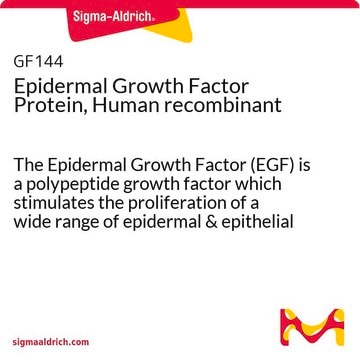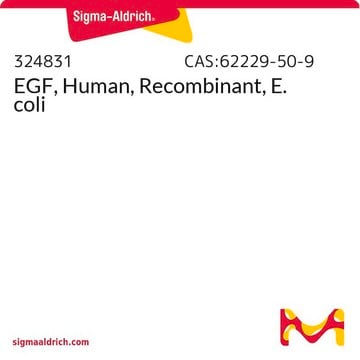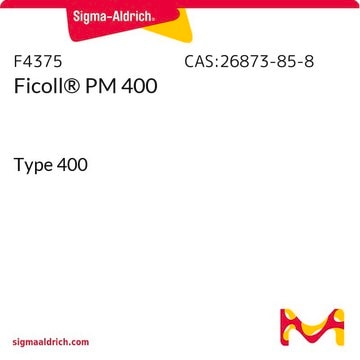05-117
Anti-FGF-2/basic FGF (neutralizing) Antibody, clone bFM-1
clone bFM-1, Upstate®, from mouse
Synonym(s):
Basic fibroblast growth factor, basic fibroblast growth factor bFGF, fibroblast growth factor 2, fibroblast growth factor 2 (basic), heparin-binding growth factor 2., GSK3 beta, GSK3B, Glycogen synthase kinase 3 beta, Glycogen synthase kinase 3β
About This Item
Recommended Products
biological source
mouse
Quality Level
antibody form
purified immunoglobulin
antibody product type
primary antibodies
clone
bFM-1, monoclonal
form
liquid
mol wt
17.5 kDa
species reactivity
human, mouse, bovine, rat
manufacturer/tradename
Upstate®
technique(s)
neutralization: suitable
radioimmunoassay: suitable
isotype
IgG1κ
suitability
not suitable for Western blot
NCBI accession no.
UniProt accession no.
shipped in
dry ice
Gene Information
human ... FGF2(2247)
mouse ... Fgf2(281161) , Fgf2(14173)
rat ... Fgf2(54250)
General description
Research area: Cancer
Specificity
Immunogen
Application
- FGF2 neutralization assay (6 or 12 µg/mL)
- in vitro tube formation assay (1000 ng/mL)
- immunolabelling (1:200)
Biochem/physiol Actions
Quality
Neutralization of bFGF Activity Assay:
2.5 µg/mL of this lot of antibody neutralized greater than 40% of growth of FBHE cells simulated with 5 ng/mL of FGF-2/bFGF.
Target description
Physical form
Storage and Stability
Analysis Note
Fetal liver or kidney tissue.
Other Notes
Legal Information
Disclaimer
Not finding the right product?
Try our Product Selector Tool.
antibody
related product
Storage Class Code
12 - Non Combustible Liquids
WGK
WGK 1
Flash Point(F)
Not applicable
Flash Point(C)
Not applicable
Certificates of Analysis (COA)
Search for Certificates of Analysis (COA) by entering the products Lot/Batch Number. Lot and Batch Numbers can be found on a product’s label following the words ‘Lot’ or ‘Batch’.
Already Own This Product?
Find documentation for the products that you have recently purchased in the Document Library.
Our team of scientists has experience in all areas of research including Life Science, Material Science, Chemical Synthesis, Chromatography, Analytical and many others.
Contact Technical Service







